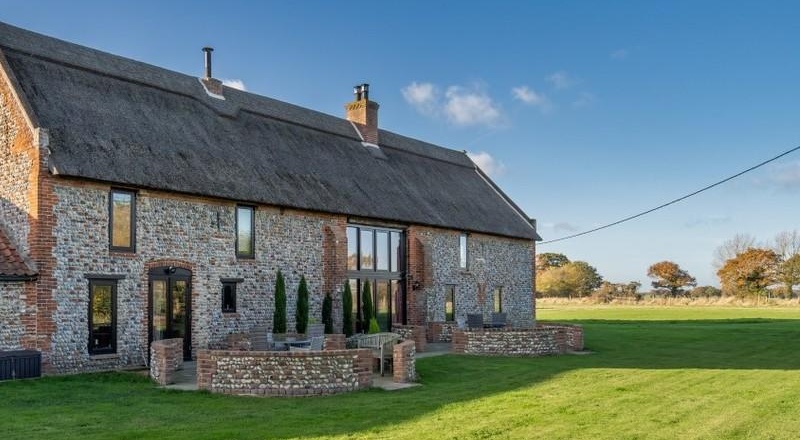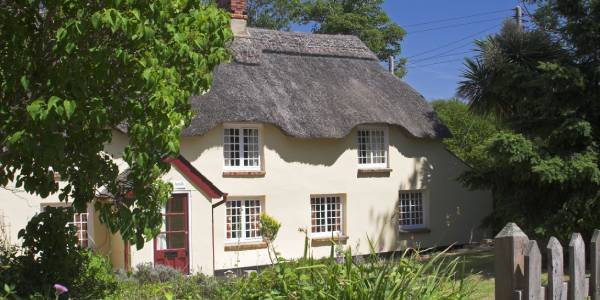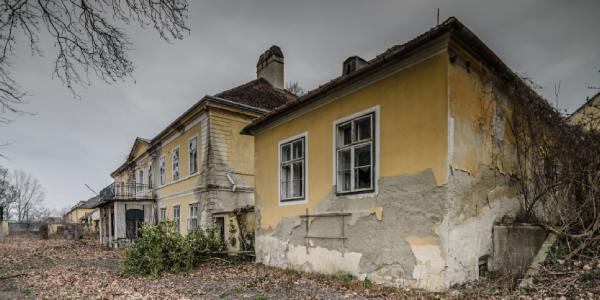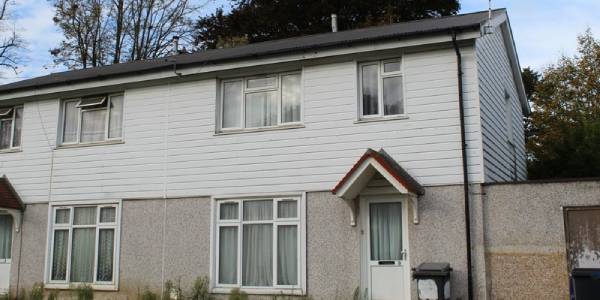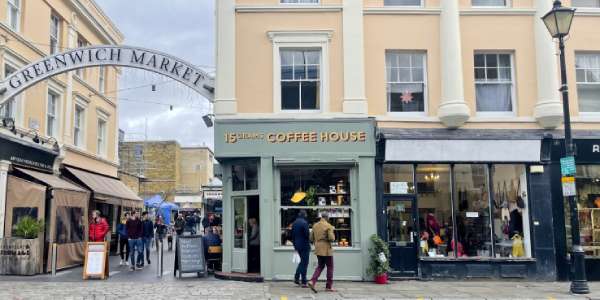The UK housing market is one of the most diverse and complex in the world. With so many different types of houses to choose from, it can be difficult to narrow down what best suits your needs.
From big to small, this guide aims to provide an overview of the various house types available in the UK and help you understand their advantages and disadvantages.
We’ll also touch on common mortgages for UK houses and provide some tips when it comes to choosing the right property for you.
Table of Contents
Studio flats
A studio flat is a type of home that combines the functions of multiple rooms into one. It usually consists of a single large room which serves as the bedroom, kitchen, and living room all in one.
The only private space will be the bathroom.
Studio flats are particularly popular for first-time buyers or those who live alone, as they require less space and cost less to maintain than larger properties. They are not suitable for families, due to the small size.
Studio flats typically range from 24-50㎡ depending on size and location. Most often, studio flats will have a private bathroom and kitchenette with basic amenities. Some may also come with additional features such as built-in wardrobes or shelving units. In addition to the main room, studio flats may also include extra storage space such as cupboards.
A popular first choice as an affordable home to rent or buy.
Flats
A purpose-built flat is a type of housing that has been specifically designed and constructed for the purpose of providing living space. Unlike other types of residential property, they are constructed to provide a large number of dwellings without occupying an unnecessarily large amount of land.
The layout of a flat will vary depending on its design and location but typically it will contain one to two bedrooms in addition to a bathroom, kitchen and living area. Many purpose-built flats will also come equipped with additional features such as balconies or terraces and/or allocated parking for residents’ cars.
Purpose built flats are particularly popular in the UK due to their cost effectiveness and convenient locations near transport links, shops, restaurants and other amenities. They can also provide homeowners with access to shared social spaces including communal gardens, gyms or play areas which might not otherwise be available.
In 2021 there were 5.4 million (21.7%) households living in a flat, maisonette or apartment
Converted flats
A converted flat is a type of housing which has been altered from its original form in order to create living space. They are typically found in larger buildings that have been adapted for the purpose, such as an old church, school, large house or office building. Converted flats are usually cheaper than the equivalent purpose-built flats due to the re-use of existing structures and materials.
Often a large house could be converted into two flats, one on the first floor and one on the ground floor. But developers will want to create as much saleable space as possible, so they will often include loft conversions. Very large properties could have any number of separate dwellings created. You are unlikely to find a lift in these types of properties.
The layout of a converted flat will vary depending on its design and location but typically it will consist of one to two bedrooms in addition to a bathroom, kitchen and living area. Other features may include balconies or terraces as well as communal gardens shared with other residents in the building.
Converted flats can provide homeowners with access to unique amenities due their locations, such as high ceilings or period features which can help give them character and charm whilst still providing cost effective living space.
While most flats are sold on a leasehold basis, some may come with a share of the freehold, while a minority may be set up as a pure freehold flat.
Split level flats
A split level duplex flat is a type of property that has two or more floors connected by an internal staircase, and can offer a unique living experience that combines elements from both studio flats and purpose built flats.
Split level duplexes offer far more space than a typical studio flat, as well as providing more options for customising your home layout. The primary benefit of choosing one of these properties is the extra space offered on each level – this makes them perfect for couples and families looking for additional space to live together, while still having some separation between their living areas.
The lower floor usually contains larger communal spaces such as kitchens and living rooms, while the upper levels are perfect for bedrooms and bathrooms. Many duplex flats can also have access to a private outdoor area like a balcony or patio which can make them an attractive option in comparison to traditional apartments.
Award winning service
Independent mortgage advice
Mortgage experts
Maisonettes
Maisonettes are essentially self contained flats, and will share the larger building with other maisonettes, by the side and above/below.
Importantly a maisonette will have its own external front door.
Maisonettes are often purpose built – meaning they have been constructed specifically as flats, rather than being converted from existing properties like townhouses or terraced houses. This means that each unit will have its own entrance, windows and facilities such as bathrooms and kitchens, allowing occupants to benefit from more privacy and independence than they would in some other types of accommodation.
If located on the ground floor, a maisonette would have direct access to its own private garden via a back door or patio doors. Those located on the first floor may still have a garden but without the easy access.
Terraced house
A terraced house is typically a two or three-storey house, built in a row of similar properties with one continuous wall shared by the adjacent houses. Such homes were popular during the 19th century as compact and affordable dwellings for working classes, and are still widely used across Britain today.
They are some of the most well known housing types in the UK.
Terraced houses generally have an entrance hallway leading to one or more ground floor rooms like the kitchen, living room and dining room, all connected by staircases to the upper levels where bedrooms are located.
The size of terraced homes can vary greatly, often depending on when they were built. Many will have 2-3 bedrooms, a small rear garden and occasionally a small space at the front. However, many have been built with 3-4 bedrooms and good sized gardens at the front and rear.
In 2021 there were 5.7 million (23.2%) households living in terraced properties
End of terrace
An end of terrace is a property at the end of a row of terraced homes. There will be one of these at each end of the row!
They only share one common wall with the adjoining house and in this regard are quite similar to a semi-detached. Often priced higher than the other terraces, these houses can sometimes occupy a slightly larger ‘corner plot’ and may have the opportunity to extend sideways.
Semi detached
Semi detached houses are built in pairs, with each half sharing one ‘party wall‘. Each half will bear the same design and appearance to its neighbour. A garage is often incorporated, either to the side or integral to the building.
They are extremely popular in the UK and will have a rear garden and occasionally a front garden and/or driveway. Semis are excellent family homes and many have the opportunity to extend to the rear, to the side and also into the loft space.
With 2/3 floors, these homes will be built with any number of bedrooms, the most popular being 2-3 beds. But with an extension and loft conversion they can be comfortably converted into 4-5 bedrooms, some with en-suite facilities.
The rear gardens will differ in size according to when they were built. Modern semis tend to have smaller gardens, often overlooked by neighbours, whereas semi’s built during the 1930’s can have substantial garden spaces, front and back.
It’s important to establish the method of construction, as some semi’s were built using internal steel frames, PRC concrete or timber frames, which are not acceptable to all lenders.
In 2021 there were 7.8 million (31.5%) households living in semi-detached properties
Detached
Detached houses do not share any walls with other properties. They are a stand alone structure and are viewed as more private.
As with the other houses above, detached properties can come in all shapes and sizes, from 2 bedrooms to 6 bedrooms and above!
Many of the older homes will have good sized gardens, front and back, a driveway and a garage. Detached homes are highly sought after and will be more expensive than the equivalent semi-detached homes.
In 2021 there were 5.8 million (23.2%) households living in detached properties
Bungalows
Bungalows can be detached or semi-detached and have accommodation just on the ground floor.
They are ideal for people who want space and privacy but perhaps can’t use stairs. As bungalows are all on one level they are very popular with elderly homeowners.
On a per unit basis, bungalows are more expensive to construct than two-story houses, because the same foundation and roof is required for a smaller living area. Very few bungalows are built, as they are less profitable for the developer. Many detached bungalows sit on large plots, and are sought after so that further dwellings can be constructed on the land.
Bungalows tend to have very shallow roofs, but it is still possible to have a loft conversion and install dormer windows, to create additional living space upstairs.
Many villages and seaside resorts have large estates of 1960s bungalows, usually occupied by retired people.
Cottages
Cottages tend to be found in rural and semi-rural areas and can come with a hefty price tag, due to their popularity.
Cottages can be detached or terraced and have 1-3 bedrooms.
This type of property will have thick walls, with a second storey that is smaller than the ground floor, and small windows. A cottage is a small house, some built over 100 years ago, and will have low ceilings and structural pillars.
A popular choice as a holiday let.
Does the type of property affect your mortgage?
Most mortgage lenders will be happy to approve a mortgage on most styles of property, subject to survey.
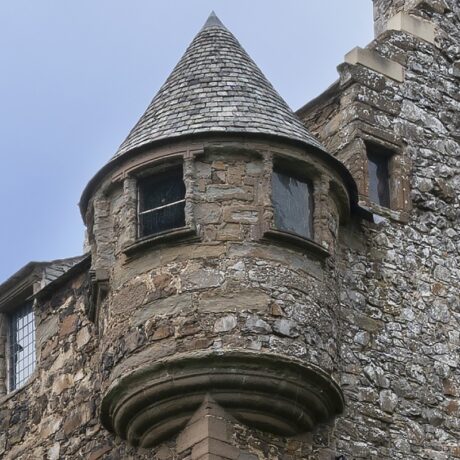
However, there are some issues that you should be aware of:
- Flats and maisonettes tend to be leasehold, so you need to make sure there is a good number of years remaining on the lease.
- Houses will normally be freehold (or flying freehold) but the use of non standard construction can cause problems. Houses made from concrete, or prefab houses, are not acceptable to many lenders unless they have been upgraded. Pre 1930’s terraced houses can cause problems where single brick walls have been used.
- Cottages or houses with thatched roofs may have a restricted choice of lenders or need a specialist property mortgage.
- Proximity to commercial businesses will also cause lender concern. Primarily flats over shops, or those adjoining restaurants, take-aways and pubs/bars. Some lenders won’t even consider an application for a mortgage above or next to a commercial property, while some will accept applications on a case-by-case basis.
- Mixed-use properties have both commercial and residential use. To purchase one you will need a semi-commercial property mortgage.
- Flood risk is an issue for lenders. Getting a mortgage on a flood risk property can be more difficult.
If you are considering purchasing a home that is slightly non-standard then you should speak with a mortgage adviser before making an offer. Some of these could include; timber framed houses, converted barns, castles and steel frame houses.
Mortgage Advice
Find the best deals and get great mortgage advice from an award winning mortgage broker
Find a mortgage broker
First Time Buyer
Guide
We have written this guide to show you the process of buying your first home with a mortgage.
Moving Home
Guide
Moving home requires a lot of organisation so we have put together this short guide to help you plan your move.

